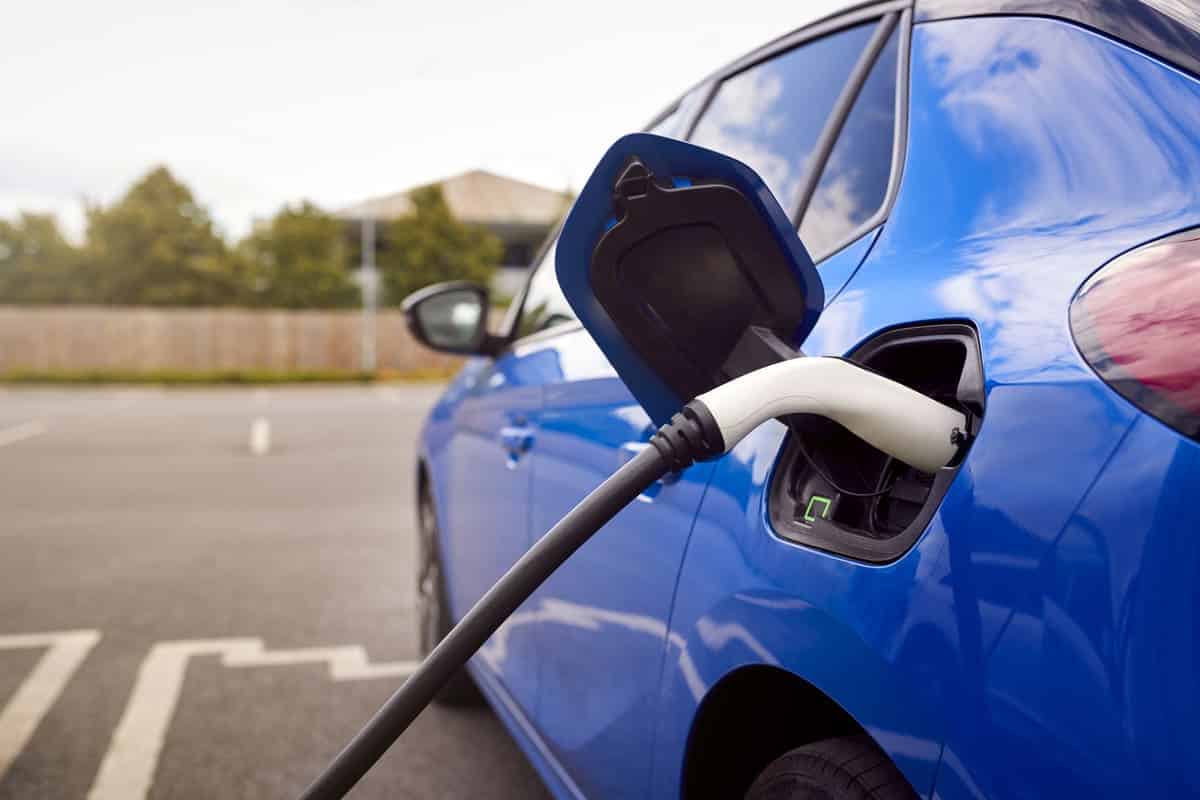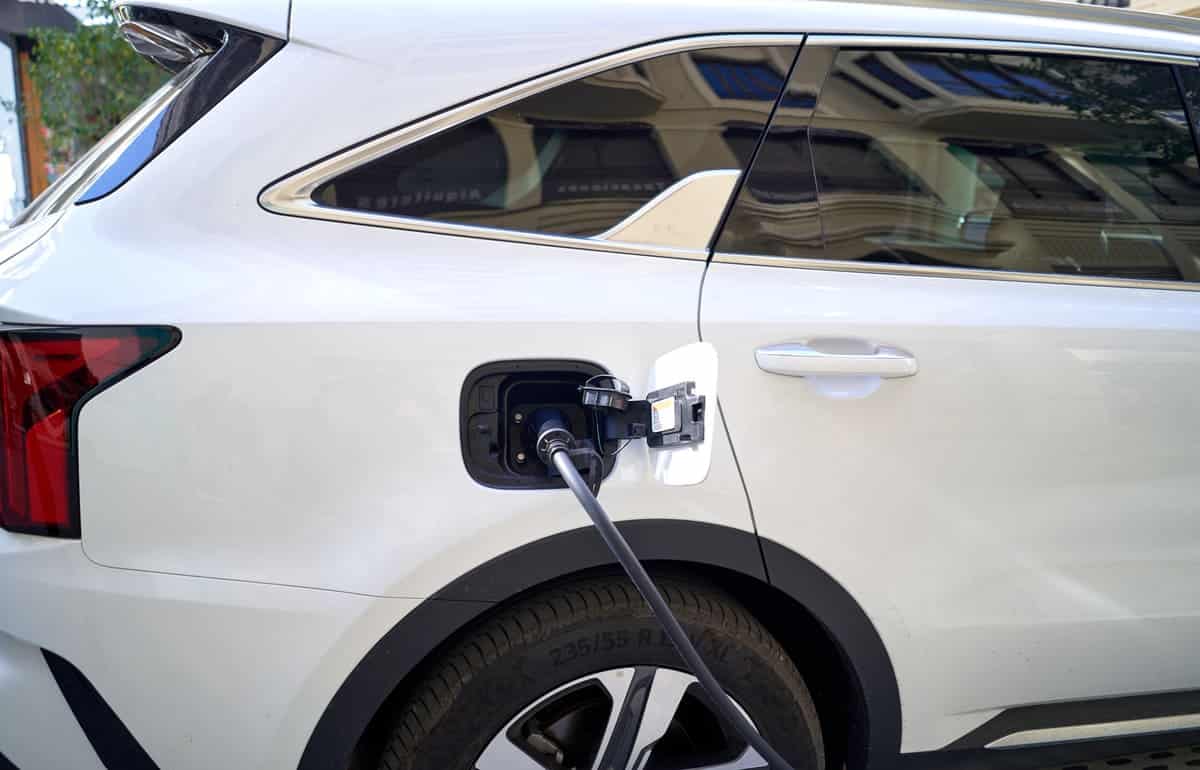Hybrid power systems switch between electric and gasoline engines to optimize performance and energy efficiency. In hybrid electric, the electric motor is good at torque and the combustion is good at higher speeds. Key benefits are more efficient, less emissions, and lower running costs than traditional vehicles.
What is a Hybrid Vehicle?
A hybrid uses a gasoline engine and an electric motor to power the car. These two work together to improve fuel efficiency.
In a hybrid the gasoline engine charges the . The battery then powers the electric motor when needed like in city driving.
At higher speeds, the gasoline engine takes over. This saves battery power for later use in stop-and-go traffic.
Many hybrids can also recharge their batteries through a process called regenerative braking. This captures the energy lost during braking and stores it in the battery.
Hybrid cars reduce pollution by using less fuel. They also cost less to run as they use less fuel and have lower maintenance costs. Overall hybrid vehicles are a smart way to travel and save money and the planet.
References
- Hybrid vehicle. Wikipedia. Retrieved from
- What is a hybrid car?. Kia. Retrieved from
A Brief History of Hybrid Vehicles:
Hybrid vehicles have been around for over 100 years. In 1899 Ferdinand Porsche built the first hybrid car the Lohner-Porsche Mixte.
In 1997 Toyota released the Prius in Japan. This was the first mass-produced hybrid vehicle. The Prius was launched in the US in 2000.
Honda launched the Insight in the US in 1999. It was the first hybrid in America, with a teardrop shape for better aerodynamics.
By the mid-2000s, more manufacturers were releasing hybrid models. These included popular cars like the Ford Escape Hybrid and Toyota Camry Hybrid.
Hybrids have evolved over time. Today they come in all shapes and sizes from small sedans to large SUVs and even trucks.
Modern hybrids use advanced technology to improve fuel efficiency and reduce emissions. They also have regenerative braking and electric-only driving modes.
In summary, hybrids are part of the mainstream. They save fuel, reduce pollution and are an alternative to traditional gas-powered cars.
References
- How Do Hybrid Cars Work?. Consumer Reports. Retrieved from
How Do Hybrid Vehicles Work?
Hybrid vehicles use a gasoline engine and an electric motor to move. Here’s how it works step by step:
Starting the Car
When you start the car the electric motor usually gets things going. It uses power from the battery. This saves fuel as the gasoline engine is off.
City Driving
At low speeds like city driving the electric motor powers the car. The battery provides the power for this. The gasoline engine is off so you use less fuel and produce less emissions.
Acceleration and High Speed
When you need more power like when accelerating or high speed the gasoline engine kicks in. It works with the electric motor to give the car more power. This teamwork makes the car more efficient.
Regenerative Braking
When you brake the hybrid captures some of that braking energy. Instead of losing it as heat the car converts it into electricity. This electricity goes back into the battery. This is called regenerative braking and keeps the battery charged.
Cruising
At steady speeds, either the gasoline engine or the electric motor can power the car depending on what’s most efficient at the time. Sometimes they can even work together.
Stopping and Starting
When you stop like at a red light the gasoline engine can shut off to save fuel. The electric motor can quickly start the car again when you press the gas pedal.
Charging the Battery
The gasoline engine can also charge the battery while you drive. This ensures the battery has enough power for the electric motor when needed. Some hybrids can be plugged in to charge the battery but not all.

What are Different Types of Hybrid Vehicles?
There are several types of hybrid vehicles, each work differently. Let’s look at the main types:
Parallel Hybrid
In a parallel hybrid both the gasoline engine and the electric motor can power the car. They work together or separately depending on what’s needed. Most hybrids on the road today are parallel hybrids.
Series Hybrid
A series hybrid uses only the electric motor to move the car. The gasoline engine doesn’t drive the wheels directly. Instead it generates electricity for the battery which powers the electric motor. This type is less common but still works.
Plug-In Hybrid (PHEV)
Plug-in hybrids have larger batteries than regular hybrids. You can charge them by plugging them into an electrical outlet. They can drive longer distances on electric power alone. When the battery runs out the gasoline engine takes over.
Mild Hybrid
Mild hybrids use an electric motor to assist the gasoline engine but can’t run on electric power alone. The electric motor helps with things like starting the car and providing extra power during acceleration.
Full Hybrid
Full hybrids can run on just the gasoline engine, just the electric motor or a combination of both. They switch between these modes to get the best fuel efficiency. The Toyota Prius is a full hybrid.
Extended-Range Electric Vehicle (EREV)
An extended-range electric vehicle runs mainly on an electric motor. It has a small gasoline engine that acts as a generator when the battery gets low. This extends the driving range beyond what the battery alone could provide.
Each type of hybrid vehicle uses a different way to combine gasoline and electric power and offers different benefits like better fuel efficiency, reduced emissions and more driving range. These options give you the flexibility to choose the hybrid that’s right for you.
What are the Key Components of Hybrid Vehicles?
Hybrid vehicles have several main components that work together to make them work. Let’s look at these:
- Gasoline Engine: The gasoline engine is like those in regular cars. It burns fuel to create power that can drive the car or charge the battery.
- Electric Motor: The electric motor uses electricity from the battery to power the car. It can work alone or with the gasoline engine. This motor is more efficient at low speed and during acceleration.
- Battery Pack: The battery pack stores electricity for the electric motor. It charges while you drive using energy from the gasoline engine or regenerative braking. Some hybrids can be plugged in to charge the battery.
- Generator: The generator produces electricity, usually powered by the gasoline engine. It sends this electricity to the battery or directly to the electric motor.
- Power Control Unit: The power control unit manages the flow of electricity between the battery, electric motor and generator. It makes sure everything works smoothly and efficiently.
- : The transmission in a hybrid vehicle delivers power from the engine and motor to the wheels. It manages the different sources of power and provides a smooth driving experience.
- Regenerative Braking System: This system captures energy when you brake and converts it into electricity. The electricity goes back into the battery.
- Cooling Systems: Hybrid vehicles have cooling systems to cool the battery, electric motor and other components. So the car can run safely and efficiently.
They work together to be more fuel efficient and emit less.
References
- Hybrid Vehicles. Infineon. Retrieved from https://www.infineon.com/cms/en/discoveries/hybrid-vehicles/


